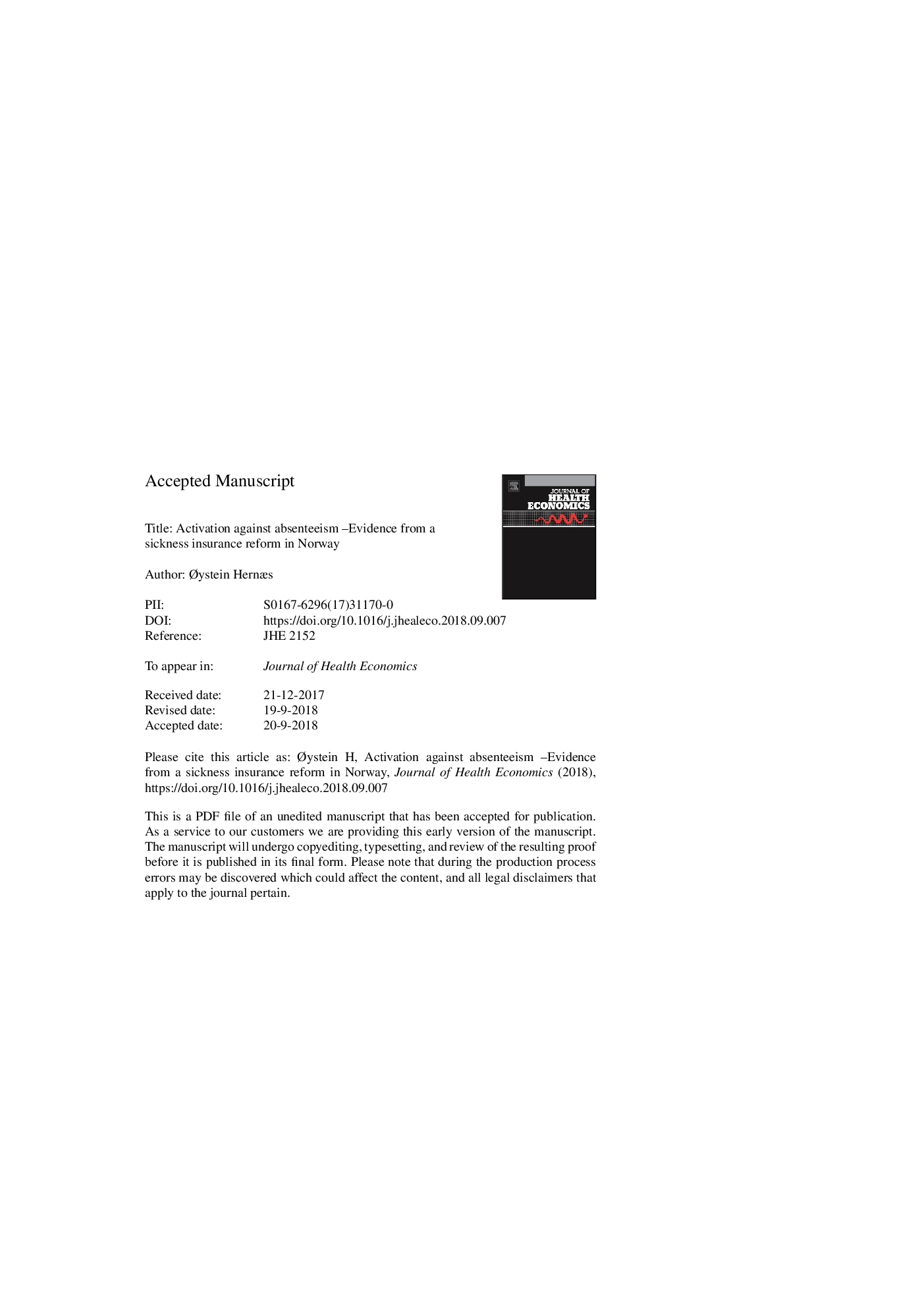| Article ID | Journal | Published Year | Pages | File Type |
|---|---|---|---|---|
| 11023329 | Journal of Health Economics | 2018 | 33 Pages |
Abstract
I evaluate a program aimed at strictly enforcing a requirement that people on long-term sick leave be partly back at work unless explicitly defined as an exception. Employing the synthetic control method, I find that the reform reduced work-hours lost due to sickness absenteeism by 12% in the reform region compared to a comparison unit created by a weighted average of similar regions. The effect is driven by both increased part-time presence of temporary disabled workers and accelerated recovery. Musculoskeletal disorders was the diagnosis group declining the most. The findings imply large savings in social security expenditures.
Related Topics
Health Sciences
Medicine and Dentistry
Public Health and Health Policy
Authors
Ãystein Hernæs,
